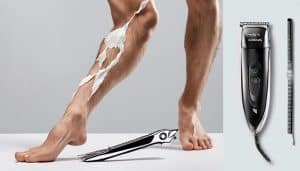You'll need a series of treatment sessions, usually ranging from 3 to 10 or more, to remove a tattoo, with the exact number depending on several factors, including the tattoo's size, colors, age, and your individual skin type and immune system strength. Factors like intricate design elements, color vs. black ink, and your overall health and healing capabilities also play a role. On average, most people need multiple sessions, spaced 4-6 weeks apart, to see significant progress. As you learn more about the removal process, you'll discover how these factors impact your individual treatment plan, and how to achieve the best possible results.
Key Takeaways
• The number of sessions required to remove a tattoo depends on the size, complexity, and color of the tattoo, as well as the individual's skin type and immune system strength.
• Older tattoos with darker inks may require fewer sessions, while newer tattoos with brighter colors may require more sessions for removal.
• The professionalism of the original tattoo artist and the tattoo's age also influence the number of sessions needed for removal.
• Individual healing capabilities, skin type, and pre-existing skin scarring can affect the number of sessions required for successful removal.
• The precision removal method used, such as laser removal or TEPR, can also impact the number of sessions needed to achieve optimal results.
Factors Influencing Session Count
Several factors, including the size, colors, depth, and age of the tattoo, will influence the number of sessions you'll need for removal. These factors can greatly impact the effectiveness of laser tattoo removal methods, making it important to take them into account before starting the removal process.
Tattoos with intricate designs, multiple colors, and deep ink penetration may require more sessions. The professionalism of the original tattoo artist and any touch-ups or cover-ups can also influence the removal process. Additionally, your skin type plays a major role, with lighter skin tones generally requiring fewer sessions compared to darker skin tones.
Your overall health, immune system strength, and healing capabilities also affect the number of sessions needed for successful tattoo removal. A healthy individual with a strong immune system will likely need fewer sessions compared to someone with a compromised immune system.
Understanding these factors is essential in determining the number of sessions required for removal. By taking these factors into consideration, you can better prepare yourself for the removal process and achieve the desired results.
Tattoo Size and Complexity
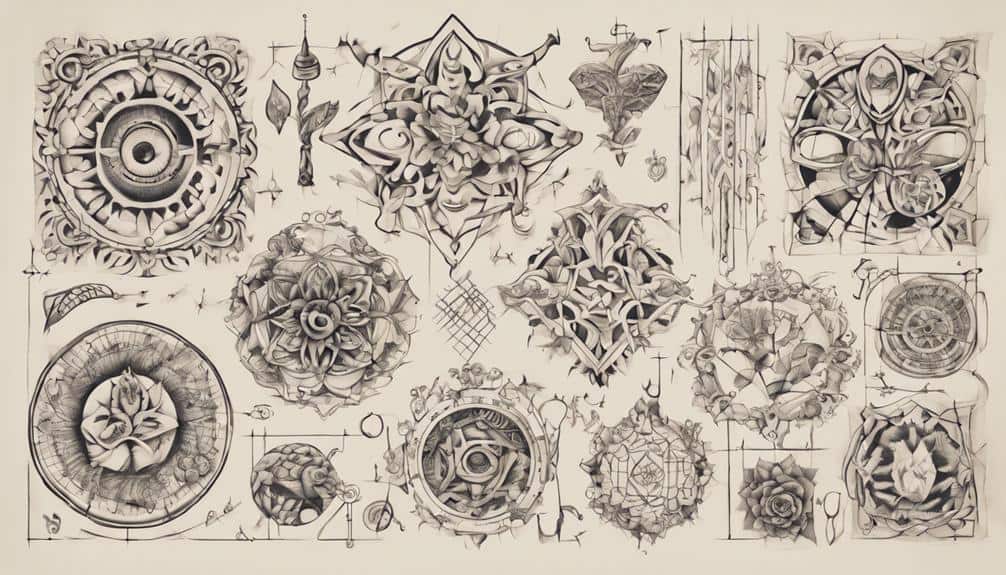
As you consider the removal of your tattoo, you'll need to think about the size and complexity of the design.
If your tattoo is small to medium in size, you'll likely require fewer sessions, but if it has intricate design elements, that could change.
The type of ink used – color or black – will also impact the number of sessions you'll need.
Small to Medium Size
When considering small to medium size tattoos, it's crucial to undergo around 5-10 laser removal sessions to achieve full removal, depending on the intricacies of the design and colors used. The complexity of the design, including the number of colors, shading, and detail, will influence the number of sessions needed. Simple black ink tattoos on small to medium areas may require fewer sessions, whereas colorful or intricate designs may need more.
Factors like your skin type, the depth of the ink, and your individual healing process will also impact the number of sessions required. Consulting with a laser removal specialist is vital to get an accurate assessment and personalized treatment plan based on your tattoo's specifics. They'll evaluate your tattoo and provide a customized plan, taking into account the unique characteristics of your tattoo.
With the right treatment plan, you can achieve successful removal and bid farewell to your unwanted tattoo.
Intricate Design Elements
Larger and more intricate tattoos with complex design elements, such as fine lines, detailed shading, and multiple colors, will likely require you to undergo more sessions to achieve complete removal. This is because intricate design elements add to the complexity of a tattoo, making it more challenging to remove. Detailed tattoos with intricate shading, fine lines, and multiple colors often need additional sessions to break down the ink particles and achieve the best results.
The size and complexity of a tattoo influence the number of sessions needed for effective removal. Intricate designs with intricate details may take longer to fade completely, requiring patience and multiple sessions. Factors like the density of ink, depth of the tattoo, and layering of colors in intricate designs contribute to the number of sessions needed for removal.
Keep in mind that intricate design elements can make the removal process more complicated. Working with an experienced practitioner who can assess your tattoo's complexity and develop a personalized treatment plan tailored to your unique needs is crucial. By understanding the intricacies of your tattoo, you can better prepare for the removal process and achieve the desired outcome.
Color Vs. Black Ink
You'll typically find that black ink tattoos require fewer sessions to remove compared to colored tattoos, and this difference in removal complexity stems from the distinct properties of the inks used. Black ink is generally easier to remove because it absorbs the laser energy more efficiently, leading to better tattoo removal results. On the other hand, colored inks are more resistant to laser treatment, making them more challenging to remove. This means you'll likely need more sessions to remove a colored tattoo compared to a black ink one.
The type of pigment used in colored inks is an important factor in the removal process. Different colored pigments respond differently to laser treatment, which affects the number of sessions required to remove the tattoo. For instance, red and orange pigments tend to be more resistant to removal, while blue and green pigments are relatively easier to remove. Understanding the differences between color vs. black ink is significant in determining the number of sessions needed for effective removal.
Age of the Tattoo Matters

The age of your tattoo plays a significant role in determining the number of laser sessions required to remove it, with older tattoos typically needing more sessions than newer ones. This is because older tattoos have had more time to settle into your skin, making them more entrenched and harder to remove. As a result, you may need more laser sessions to break down the ink and remove the tattoo.
One reason older tattoos require more sessions is that the ink has had more time to penetrate deeper into your skin. This deeper ink penetration means that the laser needs to work harder to break down the ink particles, requiring more sessions. Additionally, older tattoos may have undergone fading and degradation over time, which can affect the removal process. You may need more sessions to compensate for the ink's reduced responsiveness to the laser.
Older tattoos may also have multiple layers of ink, which can prolong the removal process. Each layer of ink requires additional treatment sessions to break down and remove. This means that older tattoos can be more challenging to remove, requiring more patience and perseverance.
Ink Colors and Skin Type

When contemplating the process of removing your tattoo, it's crucial to understand how ink colors and skin type impact the number of sessions you'll need.
You'll find that darker ink colors, such as black and blue, are generally easier to remove than lighter colors, like green and yellow.
Additionally, your skin tone plays a significant role in the removal process, with darker skin tones requiring more sessions and lighter skin tones being more prone to hypopigmentation.
Dark Ink Removal
Removing dark ink tattoos, particularly those with black, navy blue, or dark green hues, typically requires more sessions due to the higher concentration of pigment in the skin. As you consider removing your dark ink tattoo, it's crucial to understand that the pigment concentration plays a significant role in the number of sessions needed.
Dark ink removal can be more challenging due to the deeper penetration of the ink into the skin, which makes it harder to break down. Your skin type also influences the number of sessions required for dark ink removal. If you have a darker skin tone, you may need additional treatments to achieve satisfactory results.
Factors such as the depth of the ink and your skin's ability to break down pigments will also impact the number of sessions needed. To get a better understanding of the process, consult with a specialist who can provide personalized guidance on the estimated number of sessions required based on your tattoo's color and skin type.
Skin Tone Impact
Your skin tone plays a significant role in determining the number of sessions you'll need for successful tattoo removal, and understanding how it impacts the process is important.
As you consider tattoo removal, it's important to grasp how your skin tone will affect the process.
Here are some key facts to keep in mind:
- Lighter skin tones: typically require fewer sessions for tattoo removal compared to darker skin tones.
- Darker skin tones: may need more sessions for complete tattoo removal due to increased melanin levels, and are at a higher risk of hyperpigmentation during the process.
- Skin type: plays a significant role in the number of sessions needed for successful tattoo removal.
- Pigmentation risks: lighter skin tones are at risk of hypopigmentation, or lightening of the skin, during tattoo removal treatments.
Understanding how your skin tone impacts the tattoo removal process is important in determining the number of sessions needed for successful removal.
Color Contrast Matters
Taking into account the color of the ink in your tattoo and how it contrasts with your skin tone is crucial, as this greatly affects the number of sessions required for successful removal. The color contrast between the ink and your skin plays a significant role in determining the number of sessions needed. Darker ink colors, like black and blue, tend to respond well to laser treatment, requiring fewer sessions. On the other hand, lighter ink colors, such as green and yellow, may require more sessions due to their lower absorption rate.
Your skin type also influences the removal process. If you have a darker skin tone, you may need more sessions to avoid hyperpigmentation. Conversely, if you have a lighter skin tone, you'll likely need fewer sessions.
Understanding the interaction between the ink colors and your skin type is crucial in estimating the number of sessions required for successful removal. By comprehending the impact of color contrast, you'll be better prepared for the removal process and can set realistic expectations with your practitioner.
Health and Healing Capabilities

Your skin's natural healing capabilities play a significant role in determining the number of sessions needed for successful tattoo removal. The health of your immune system, in particular, is pivotal in this process. A robust immune system helps to flush out ink particles, making each session more effective. On the other hand, factors that weaken your immune system can impact the removal process, potentially requiring more sessions.
Here are some key factors to take into account:
- Immune system strength: A healthy immune system aids in removing ink particles, reducing the number of sessions needed.
- Skin healing: Proper healing time between sessions is essential for best results and to minimize the risk of complications.
- Skin scarring: Pre-existing skin scarring from tattoos can complicate the removal process, affecting the number of sessions needed for complete removal.
- Individual healing capabilities: Your skin's natural healing capabilities, influenced by your overall health and lifestyle, impact the effectiveness of each session.
Budget and Time Constraints

Budget constraints often compel individuals to evaluate the cost of each session against their desire to remove unwanted tattoos, as the total cost of the process can be substantial. You'll need to take into account the financial implications of the removal process, as the number of sessions you'll need can vary greatly.
Factors like the size and color of your tattoo, as well as your skin type, will impact the number of sessions required.
Time constraints also play a major role in the removal process. Sessions are typically spaced 6-8 weeks apart to allow for best healing and ink elimination. You'll need to make sure you have a realistic timeline in mind, considering the time required for each session and the necessary healing periods in between.
When planning for tattoo removal, it's crucial to take into account both budget and time availability. These factors will greatly influence the overall removal process and outcome.
You'll need to weigh the cost of each session against the number of sessions you'll need, making sure you have a clear understanding of the time and financial commitments involved. By doing so, you'll be better equipped to make informed decisions about your tattoo removal journey.
Precision of Removal Method
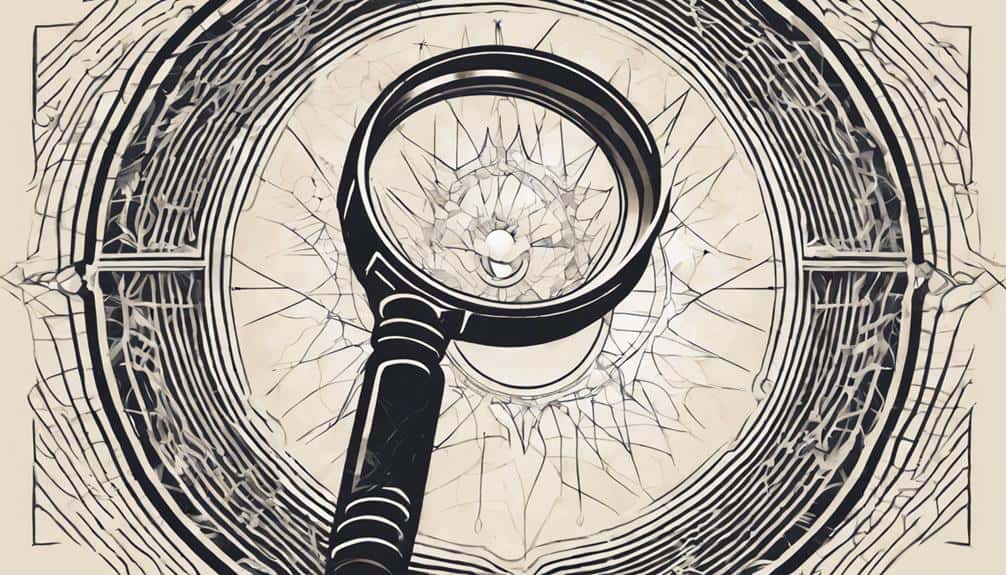
When it comes to precision removal methods, Tatt2Away's TEPR system and laser tattoo removal stand out as two distinct approaches with varying levels of effectiveness.
The TEPR system, used in Tatt2Away, offers customizable solutions with its precision instrument for tailored removal. This approach allows for a more precise removal process, resulting in fewer sessions needed to remove your tattoo. In contrast, laser removal may have limited effectiveness on specific ink colors and skin tones, influencing the number of sessions needed.
Here are some key differences between the two methods:
- Customization: Tatt2Away's TEPR system offers customizable solutions for tailored removal, while laser removal is a more standardized process.
- Effectiveness: The TEPR system can lead to quicker removal with fewer sessions compared to laser removal.
- Ink color limitations: Laser removal may struggle with certain ink colors, while the TEPR system isn't limited by ink color.
- Skin tone influence: Laser removal may be affected by skin tone, whereas the TEPR system is not.
When considering precision removal methods, it's essential to weigh the benefits of each approach. If you're looking for a more tailored and efficient removal process, the TEPR system might be the better choice. However, if you're willing to undergo multiple sessions, laser removal could be a viable option.
Number of Sessions Required
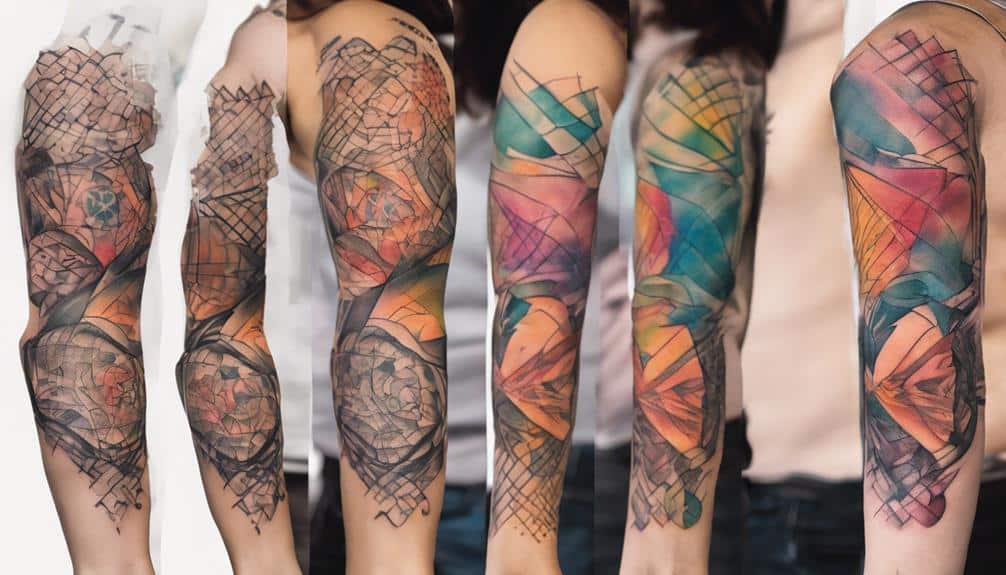
Determining the number of sessions required for tattoo removal involves evaluating various factors, including the tattoo's size, ink colors, skin type, and age, as each of these elements impacts the effectiveness of the removal process. Your tattoo removal specialist will assess these factors to create a personalized treatment plan tailored to your unique needs.
The number of sessions needed can vary considerably from person to person. Generally, you can expect to undergo between 5 to 15 laser sessions, spaced 6-8 weeks apart, to completely remove your tattoo. However, this number can increase or decrease depending on the specific characteristics of your tattoo.
| Factor | Impact on Sessions | Example |
|---|---|---|
| Tattoo Size | Larger tattoos require more sessions | A small tattoo may need 5 sessions, while a large one may need 10-12 |
| Ink Colors | Certain colors, like blue and green, are harder to remove | A tattoo with multiple colors may need more sessions than one with a single color |
| Skin Type | Fair skin may require more sessions than darker skin | Your skin type will influence the laser settings and number of sessions needed |
Keep in mind that older tattoos may require more sessions due to deeper ink penetration and fading over time. Similarly, larger tattoos with complex designs or multiple colors typically need more sessions for complete removal. By understanding these factors, you can expect a more accurate estimate of the number of sessions required for your tattoo removal process.
Laser Tattoo Removal Process
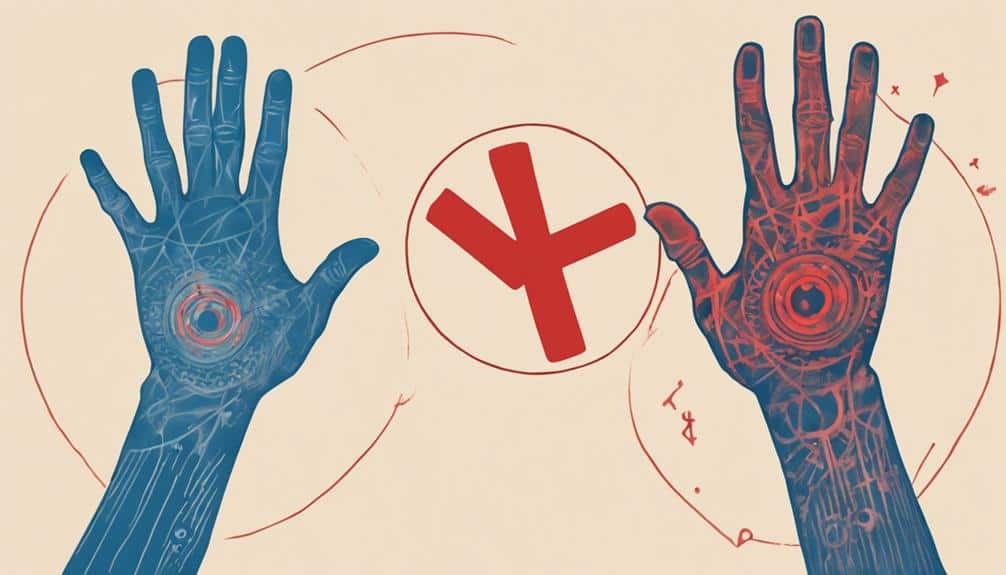
During the laser tattoo removal process, your specialist will use a high-intensity light beam to target and break down the unwanted ink particles, allowing your body to naturally remove them over time. This process is precise, targeting only the ink particles while leaving the surrounding skin unaffected.
Here's what happens during the process:
- Heat Expansion: The laser's heat causes the ink particles to expand and fragment, making it easier for your body to remove them.
- Contrasting Temperatures: The temperature difference helps break down the ink particles, allowing white blood cells to carry them to the liver for expulsion.
- Laser Precision: The high-intensity light beam is precisely controlled to target only the ink particles, minimizing damage to surrounding skin.
- Natural Removal: Your body's immune system naturally removes the broken-down ink particles over time, resulting in full removal.
Laser removal is a preferred method due to its effectiveness, minimal side effects, and lower risk compared to older removal methods like dermabrasion or excision. Your specialist will work with you to create a personalized treatment plan, taking into account factors like the tattoo's age, size, ink type, and depth in the skin to achieve full removal. With laser tattoo removal, you can say goodbye to unwanted ink and hello to a fresh start.
Session Frequency and Scheduling

You'll need to schedule multiple sessions for successful tattoo removal, with each session spaced 6-8 weeks apart to allow for proper healing and ink elimination. This session frequency is important, as it enables your skin to recover from the treatment and allows the laser to effectively break down the tattoo ink.
Rushing the process can lead to complications like scarring, blistering, and pigmentation issues. Proper session scheduling is vital to prevent these issues. Your dermatologist will assess your skin's response to the treatment and adjust the session frequency accordingly.
In some cases, longer breaks between sessions may be necessary, depending on individual skin recovery. It's crucial to prioritize proper healing and ink elimination over rushing the removal process. Close sessions can increase the risk of skin damage and permanent scarring, emphasizing the importance of intervals.
Consulting experienced dermatologists and using quality laser devices is crucial for safe and effective session scheduling. By spacing your sessions correctly, you'll be able to achieve the best results while minimizing the risk of complications.
Typical Progress and Results
As you undergo the tattoo removal process, it's important to understand the typical progress and results you can expect, with most clients requiring 5 to 15 sessions to achieve the best outcomes. Factors like tattoo size, ink colors, skin type, and age of the tattoo influence the number of sessions required. A tattoo removal consultation with a specialist can provide a more accurate estimate of the number of sessions needed based on individual circumstances.
Here's what you can expect during the laser tattoo removal process:
- Noticeable fading: Most clients start seeing noticeable fading after 3 to 5 sessions, with treatments spaced 6 to 8 weeks apart for best results.
- Significant progress: By 6 to 8 sessions, you'll likely see significant progress, with the tattoo becoming increasingly faded.
- Major breakthroughs: Around 10 to 12 sessions, you may experience major breakthroughs, with the tattoo becoming much lighter or nearly gone.
- Final results: After completing the recommended number of sessions, you can expect to see the final results of your tattoo removal, with the tattoo either completely removed or greatly faded.
Throughout the healing process, it's important to follow post-treatment instructions carefully to ensure successful laser tattoo removal healing. By understanding the typical progress and results, you can set realistic expectations and make informed decisions about your tattoo removal journey.
Dealing With Pain and Discomfort
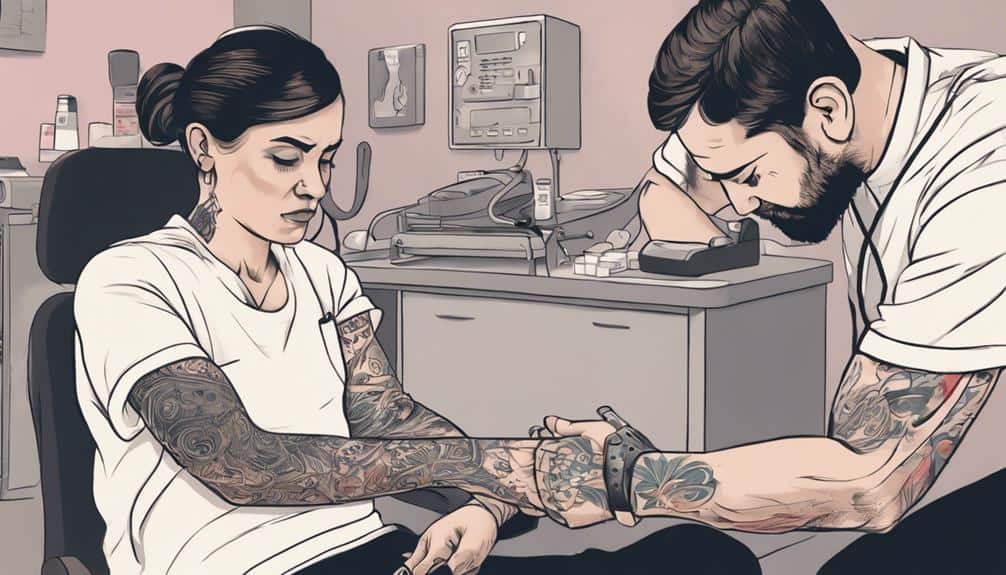
When getting ready for your tattoo removal sessions, it's crucial to understand what to expect regarding pain and discomfort. Fortunately, there are ways to manage any discomfort you may experience during the process.
You'll be relieved to know that there are pain management options and techniques to reduce discomfort, which we'll explore in more detail.
Pain Management Options
During each laser tattoo removal session, prioritizing pain and discomfort management becomes a top concern. You'll want to discuss pain management options with your specialist to guarantee a comfortable experience.
Here are some alternatives to ponder:
- Topical numbing creams or gels: These are commonly used to minimize pain during sessions.
- Cooling devices: Devices like Zimmer machines can help alleviate discomfort by numbing the skin before and during the procedure.
- Local anesthesia injections: These may be administered for larger or more painful tattoo removal sessions to effectively handle pain.
- Cryotherapy: This involves applying freezing temperatures to the skin, helping to numb the area and reduce pain sensations during the procedure.
Different pain management options can be discussed with your tattoo removal specialist to ensure a comfortable experience during the sessions. By exploring these options, you can feel more at ease and focused on achieving your desired results.
Ways to Reduce Discomfort
To minimize discomfort and pain, you can take several steps to prepare for your laser tattoo removal session. This includes using numbing creams or local anesthesia, taking over-the-counter pain medication beforehand, and communicating openly with your technician about your pain tolerance. By doing so, you can reduce the discomfort associated with the procedure.
Additionally, some clinics offer cooling devices or air cooling systems to minimize pain and discomfort. You can also request short breaks during the session to alleviate any discomfort. It's important to communicate openly with your technician about your pain tolerance to tailor the session for maximum comfort.
Aftercare and Healing Process
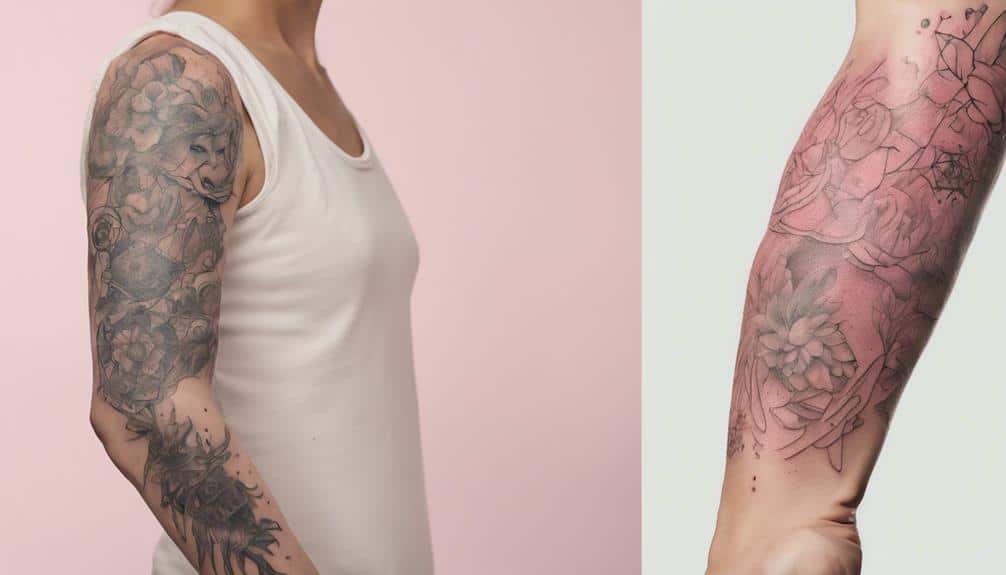
You'll need to prioritize proper aftercare to guarantee a smooth healing process and minimize the risk of complications between sessions. After each tattoo removal session, you'll need to take care of your skin to ensure a speedy recovery. This includes keeping the treated area clean and dry, using recommended ointments as advised by your specialist, and being prepared for immediate post-treatment reactions like redness and swelling.
Here are some key aftercare tips to keep in mind:
- Cleanliness is key: Gently wash the treated area with soap and lukewarm water.
- Moisturize: Apply a thin layer of recommended ointment to keep the skin hydrated.
- Avoid direct sunlight: Direct sun exposure can cause hyperpigmentation and delay healing time.
- Monitor for blisters: If blisters form, avoid bursting them and keep the area clean to prevent infection.
During the healing time between sessions, it's vital to follow these guidelines to ensure your skin heals properly. Blisters may form a week or two after the session, requiring specific care.
Achieving Desired Removal Results

As you work towards achieving desired removal results, it's crucial to grasp the key factors that influence the process.
You'll need to develop a personalized treatment plan, strategically space your sessions, and consider your skin type to guarantee the best outcomes.
Treatment Plan Development
Creating a personalized treatment plan is essential to achieving desired removal results, and a tattoo removal specialist will work with you to develop a customized plan tailored to your unique tattoo characteristics and goals. During your consultation, the specialist will assess your tattoo, taking into account its size, ink colors, age, and location on the body. This information will help determine the number of sessions needed for complete removal.
Here are the key factors that influence your treatment plan development:
- Tattoo size: Larger tattoos require more sessions to remove.
- Ink colors: Certain colors, like blue and green, are more challenging to remove than others.
- Skin type: Your skin type can affect the laser's ability to penetrate and break up the ink.
- Tattoo age and location: Older tattoos and those located on areas with more fat (like the arms and legs) may require more sessions.
Session Spacing Strategy
Your session spacing strategy plays a vital role in achieving desired removal results, as it allows your skin sufficient time to heal and respond to the laser treatment.
A well-planned session spacing strategy is essential to guarantee optimal healing and ink elimination. Typically, it's recommended to space out sessions 6-8 weeks apart, allowing your skin to recover and respond effectively to the treatment.
Rushing the process can lead to complications, such as skin damage, scarring, blistering, and pigmentation issues. Working with experienced dermatologists and quality laser devices is vital to ensure safe evaluation and treatment during the removal process.
By spacing out your sessions, you allow your skin to heal properly, reducing the risk of complications and ensuring the best possible results. Don't rush the process; instead, prioritize a strategic session spacing strategy to achieve the desired removal results.
Skin Type Considerations
When it comes to achieving desired removal results, your skin type plays a crucial role in determining the effectiveness of the tattoo removal process. The number of sessions required to remove a tattoo can vary greatly depending on your skin tone.
Here are some key considerations to keep in mind:
- Lighter skin tones: Typically require fewer sessions for tattoo removal due to lower melanin levels.
- Darker skin tones: May need more sessions for complete removal due to higher melanin levels, which can increase the risk of hyperpigmentation.
- Treatment adjustments: The intensity of treatment may need to be adjusted for different skin types to ensure safety and efficacy.
- Skin type risks: There's a risk of hypopigmentation in lighter skin tones and hyperpigmentation in darker skin tones during tattoo removal.
Will Stripping Hair Color Affect the Number of Sessions Needed to Remove a Tattoo?
The use of stripping hair color technique will not affect the number of sessions needed to remove a tattoo. These two processes work on different parts of the body and do not have a direct impact on each other. The tattoo removal process will depend on the ink and the skin, not the hair.
Frequently Asked Questions
Can You Remove a Tattoo in 3 Sessions?
Can you remove a tattoo in 3 sessions? Well, it's possible, but it's not a guarantee. Factors like tattoo size, ink colors, and skin type play a significant role.
You might see significant fading, but complete removal in 3 sessions is unlikely. Your body's response to treatment and individual tattoo characteristics will influence the outcome.
Consult a specialist to get a better understanding of what to expect for your unique tattoo.
Can a Tattoo Be 100% Removed?
You've heard stories of people removing their tattoos in just a few sessions, like Sarah, who erased her small, black ankle tattoo in five sessions. But can you achieve 100% removal?
The answer is, achieving complete removal isn't always possible. Factors like ink colors, skin type, and tattoo age affect the outcome. While some tattoos may lighten substantially, complete removal isn't guaranteed.
It's crucial to have realistic expectations and consult a specialist for a personalized estimate.
How Many Sessions Does It Take to Remove a Black Tattoo?
You're wondering how many sessions it'll take to remove that black tattoo. Generally, you can expect 5 to 10 sessions, depending on factors like tattoo size, ink density, and your skin type.
Older tattoos might need more sessions due to deeper ink penetration. Don't worry, black ink responds well to laser removal, and you'll likely see significant fading after each session.
You'll notice a difference after just a few sessions, with continued improvement over time.
How Long Until a Tattoo Is Fully Removed?
You're likely wondering, 'How long until my tattoo is fully removed?' Well, the answer isn't a one-size-fits-all solution.
On average, you'll need to wait around 12-18 months, assuming you have 10-12 sessions spaced 6-8 weeks apart. However, this timeline can vary greatly depending on your tattoo's size, ink colors, skin type, and age.
Be patient, and with regular sessions and proper healing time, you'll be on your way to a tattoo-free you.
Conclusion
As you begin the journey to erase your tattoo, remember that patience is key. The path to removal is like maneuvering a winding road, filled with twists and turns.
Each session is a step closer to your goal, and with time, your tattoo will fade like a sunset on the horizon.
Stay committed, and the results will be worth the effort.

